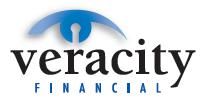
A REAL LIFE STORY OF A SMART AND SUCCESSFUL DENTIST
A very successful dentist lost 46% in his investment and retirement accounts a couple of years ago. While his investments (like many of ours) have bounced back a little, they have not reached anywhere near their previous high levels.
The dentist feels that if he were able to finance his patients’ dental procedures, the revenue to his dental practice would increase by over 30%.
The dentist also realizes that any money he directs to his retirement account may not be withdrawn without penalty until age 59½, and that, contrary to earlier expectations, he most likely will be in ahigher tax bracket due to tax rate increases.
Finance companies are lining up to lend to his patients, but they will charge him a 10% factoring fee and also charge the patients between 12 and 18%.
This successful dentist wants to do a few things:
The Perfect Plan
The Results
A very successful dentist lost 46% in his investment and retirement accounts a couple of years ago. While his investments (like many of ours) have bounced back a little, they have not reached anywhere near their previous high levels.
The dentist feels that if he were able to finance his patients’ dental procedures, the revenue to his dental practice would increase by over 30%.
The dentist also realizes that any money he directs to his retirement account may not be withdrawn without penalty until age 59½, and that, contrary to earlier expectations, he most likely will be in ahigher tax bracket due to tax rate increases.
Finance companies are lining up to lend to his patients, but they will charge him a 10% factoring fee and also charge the patients between 12 and 18%.
This successful dentist wants to do a few things:
- Stop losing money on his investments.
- Increase the revenue to his practice.
- Earn the money he and his patients would be paying to third party finance company.
The Perfect Plan
- The dentist redirected his investment accounts and retirement contributions to capitalize his finance company.
- The dentist set up an over-funded, dividend-paying whole life policy to hold the capital not currently being used for financing.
- The dentist contracted with a group to be the administrative arm of his finance company.
The Results
- The dentist is earning 13 -14% on his assets with no market risk.
- The revenue from his dental practice has increased and he does not have to pay a 10% factoring fee.
- As the dental practice has additional financing needs, his own finance company will place the loans, keeping the profit that third party lenders would have made from the dentist.
- By stopping the funding of his retirement plan, the dentist doesn’t have to worry about deferring money at lower tax rates, then having the government tax a bigger share when he finally takes distributions.
- The dentist has liquidity, use and control of his money.


